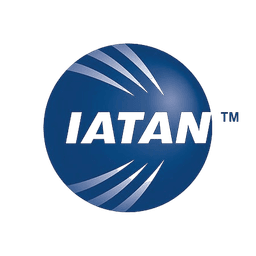


In the early 18th century a team of French scientists and two chaperones from the Spanish military set sail for the Spanish colony of Peru with the intention of measuring the length of a single degree of latitude at the Equator. This distance would then be compared with the length of a degree of latitude in France to determine whether the earth was elongated at the poles (as Descartes had hypothesised) or flattened as Newton believed. Not only would this settle once and for all the debate between the Cartesians and the Newtonians, but it would also enable far more accurate navigation at sea.
Larrie D Ferreiro’s book is the most complete and thorough account of the group’s travails in South America, but it is also a rollicking page-turner, and a must-read for anyone visiting modern-day Ecuador. The French Geodesic Mission to the Equator (as the expedition was known) turned into a far greater adventure than any of its members would have foreseen, involving as it did fatal duels and illegitimate children; wars, earthquakes and epidemics.
Section Type: standardWidthImageS

Their mission had the blessing of both the French and Spanish governments, and as such it constituted the world’s very first international scientific expedition. But before the group had even left European shores the cracks started to show. This was nothing to do with Spanish-French rivalries and everything to do with a clash of personalities between the esteemed French scientists. The leader of the group, Louis Godin, should probably shoulder most of the blame as he was socially inept, prone to take unilateral decisions and, perhaps most importantly, irresponsible with money. The most glaring – but by no means the only – evidence of this last foible was his use of a large percentage of the budget to shower gifts of jewelry on a prostitute he met en route to Peru!
After more than a year of travel, and having exhausted most of their budget for the entire mission, the scientists finally arrived in Quito – notably in three different groups. They were not given the heroes’ welcome they may have hoped for: the president of the Audiencia of Quito was shocked at the state of their finances (and their clothes) and he even went so far as to suspect them of smuggling. Not for the first time, the two Spanish chaperones had to intervene on the Frenchmen’s behalf. At last, the scientific work could commence.
The first order of business was to find a long and relatively flat stretch of land to act as a baseline for their measurement. It is no coincidence that the area they settled on is now the site of Quito’s International Airport. Runways also require flat land – something which is in short supply near the Ecuadorian capital. As you land at the airport keep an eye out for a small pyramid which marks the Northern end of the scientists’ baseline at Caraburo.
Section Type: standardWidthImageS
The map of the Amazon made by Charles-Marie de la Condamine on his (very long-winded) return from the mission.

I won’t go into the details of the scientific endeavours (you’ll have to read the book for that) but I will say that the lengths these men went to in pursuit of their goal is mind-boggling. They measured the baseline using a single iron rod whose length they knew (called a toise) and once they had agreed upon the length of the baseline they used a process called triangulation to measure the distance of three degrees of latitude. Triangulation is still used today (in fact it’s been used extensively in tracking flight MH370) but these days it involves GPS coordinates and calculators. In the 1700s it involved hiking up 6000m peaks, waiting days, weeks or even months for the skies to clear and taking readings against known landmarks. Once their triangulation was finally complete they had to confirm the latitude of the two endpoints through simultaneous astronomical observations – no mean feat considering the constantly clouded skies and the fact that the endpoints were a two-week horse-ride apart!
Measure of the Earth is so much more than an account of a scientific mission. It is about science and colonialism and diplomacy and anthropology. Ferreiro’s research has uncovered myriad fascinating side stories, which he weaves into his narrative with the skill of a veteran novelist. In addition to being a great read, it’s a book which inspires you to read more and discover more about the topsy-turvy history of South America.


Copyright © 2025 SA Luxury Expeditions LLC, All rights reserved | 95 Third Street, 2nd floor, San Francisco, CA, 94103 | 415-549-8049
California Registered Seller of Travel - CST 2115890-50. Registration as a seller of travel does not constitute approval by the state of California.










